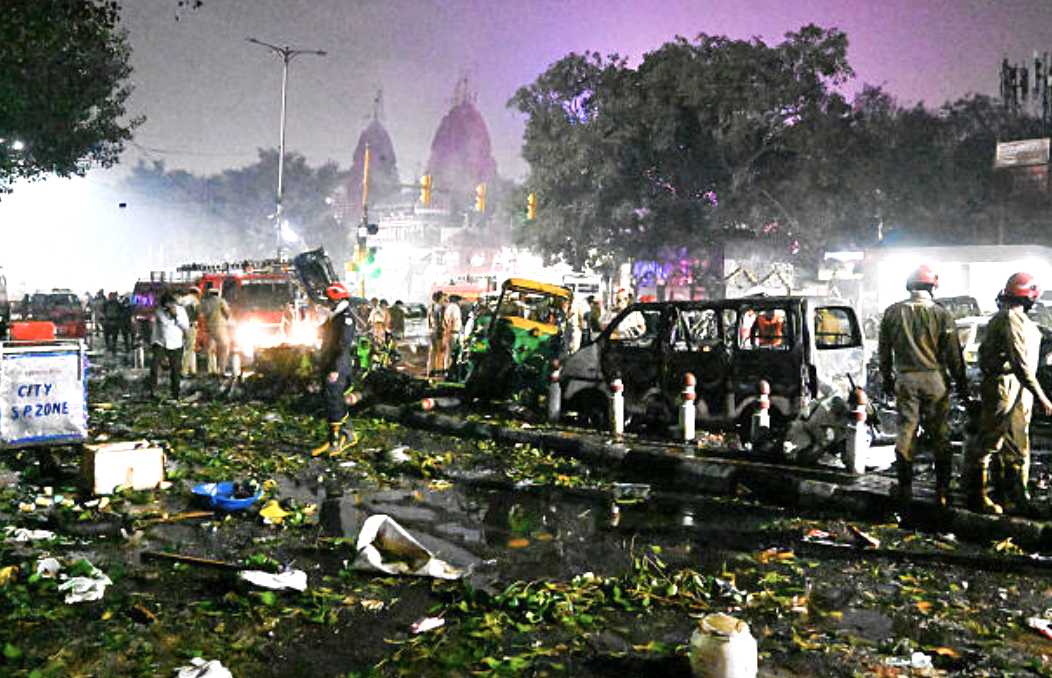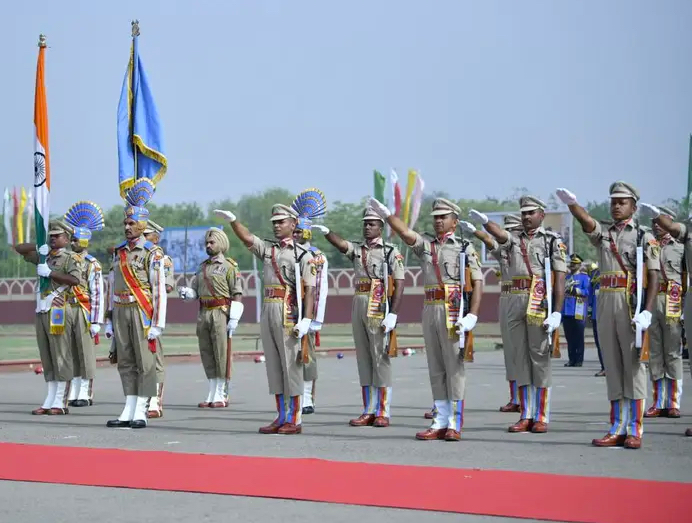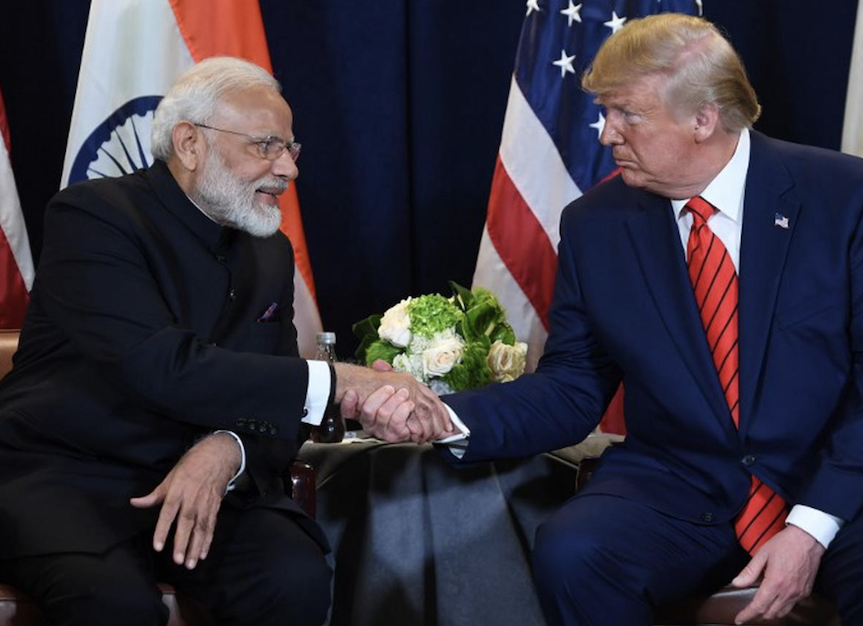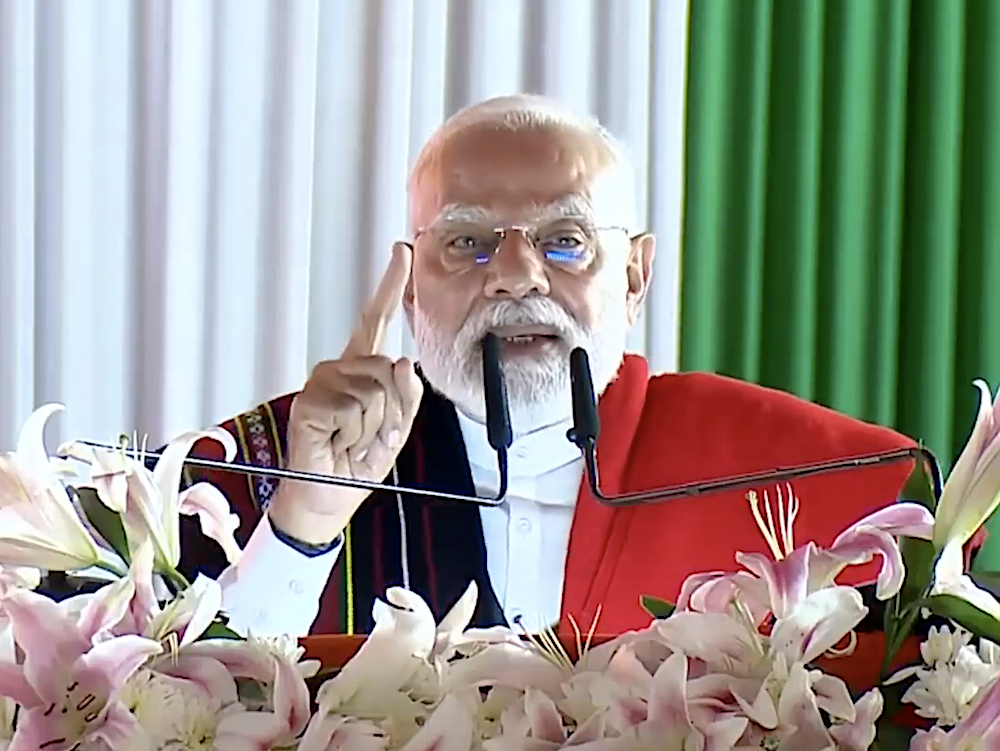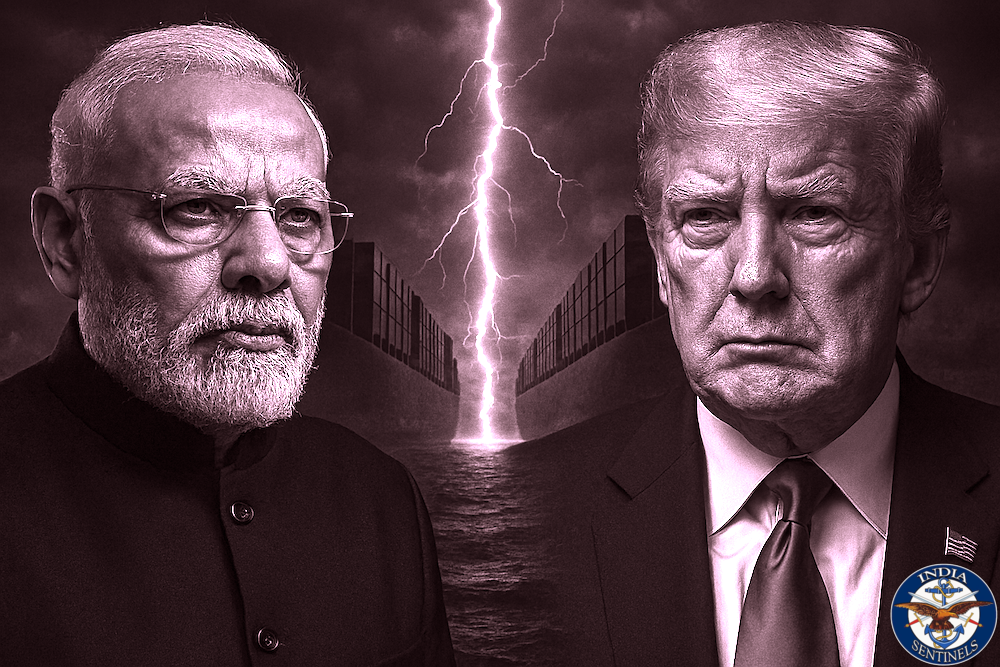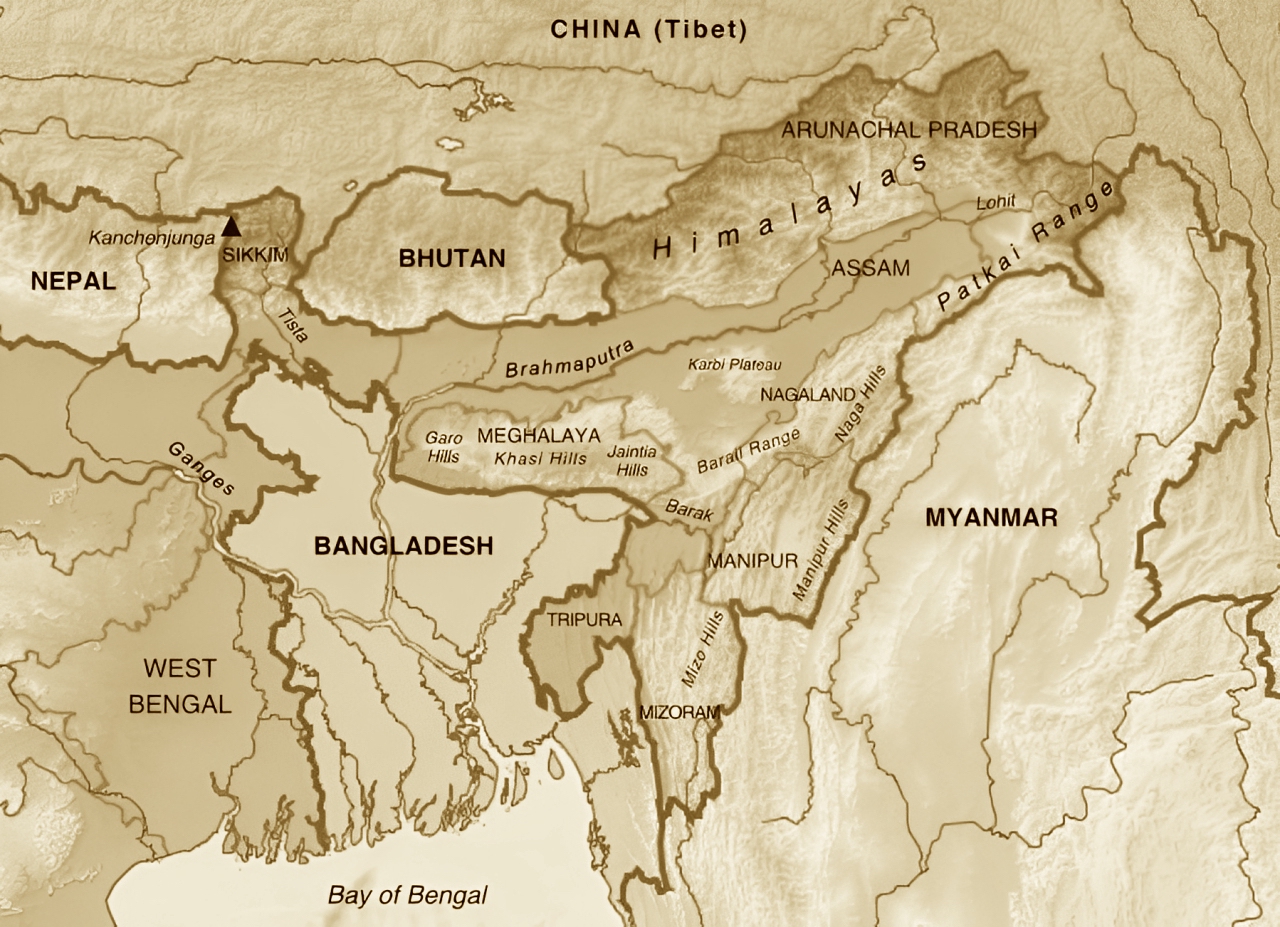 Map showing India’s east and northeast with neighbouring countries’ locations for perspective. (Map not to scale)
Map showing India’s east and northeast with neighbouring countries’ locations for perspective. (Map not to scale)
In the annals of military strategy, there exists a fundamental principle that nations ignore at their peril: threats, like tide, rarely announce their arrival. Today, as India witnesses an epochal shift from strategic restraint to decisive retaliation through Operation Sindoor, a veteran observer cannot help but recognize that this transformation represents more than tactical evolution – it signals the dawn of an era demanding unprecedented vigilance.
The security architecture anchoring the Indian subcontinent for decades is experiencing tectonic shifts. From the Siliguri Corridor’s narrow confines to Cox’s Bazar’s refugee camps, from Dhaka’s diplomatic corridors to Rakhine State’s mountainous redoubts, India confronts interconnected threats demanding immediate and sustained attention.
Operation Sindoor has fundamentally altered India’s security posture. Prime Minister Narendra Modi’s post-operation declaration makes it clear: terror will no longer be met with restraint. Every act of terrorism will be treated as an act of war. This doctrinal shift represents what military strategists term “proactive deterrence underpinned by calibrated coercive capability.”
The operation’s success lay not merely in tactical execution but in strategic messaging. India demonstrated possession of both capability and resolve to conduct precision strikes deep into Pakistani territory while maintaining escalation control. The coordinated application of air, land, and cyber capabilities showcased India’s evolution towards true joint operations – a transformation with profound implications for regional deterrence.
This paradigm shift from “deterrence by denial” to “deterrence by punishment” signals India’s readiness to impose unacceptable costs on adversaries rather than simply defending against their actions. The message is unambiguous: the era of bleeding India through a thousand cuts while hiding behind nuclear thresholds has ended.
However, as this author had warned in his past article here, this lowered threshold creates what we can call “escalation entrapment” – a situation where doctrinal commitments force a nation into conflicts at times and circumstances not of its choosing. Pakistan’s terror networks can now calculate with precision the type and scale of attack required to trigger automatic Indian military response, allowing them to choose the battlefield and timing of engagement that gives them an advantage over India.
Paradoxically, while Operation Sindoor demonstrated India’s resolve on the western front, it may have inadvertently accelerated threats on the eastern flank. With Pakistan’s conventional military capabilities constrained and Pakistan Army chief Field Marshal Asim Munir’s Inter-Services Intelligence background providing deep understanding of asymmetric warfare, Islamabad appears to be pivoting eastward, leveraging Bangladesh’s current political instability and China’s territorial ambitions in the northeast.
Read also: Devil’s Triangle – India’s strategic nightmare that could choke northeast
The Multi-Front Challenge
Perhaps nowhere is the changing security landscape more evident than in Bangladesh. Under the interim government led by the country’s chief advisor, Muhammad Yunus, Dhaka has witnessed a marked shift in its security partnerships – a transformation that fundamentally alters the strategic calculus for India’s eastern borders.
Bangladesh’s growing proximity to China and Pakistan represents a dangerous convergence of India’s primary adversaries on the eastern front. Beijing’s bilateral trade with Dhaka now exceeds $25 billion. Also, Bangladesh is China’s second-largest weapons buyer in South Asia. This economic leverage translates directly into political influence, with Chinese infrastructure projects creating dual-use capabilities that could threaten Indian interests.
The release of anti-India terrorists, including Jashimuddin Rahmani and Abdus Salam Pintu, signals more than a concerning departure from previous counterterrorism cooperation – it indicates Dhaka’s willingness to accommodate Pakistan’s strategic objectives in the region. This shift provides the ISI with unprecedented operational space in Bangladesh, creating new pathways for projecting power against India’s vulnerable northeastern states.
More alarming is the emergence of what some have termed the “Four Brothers Alliance” – an evolving Islamist fighters’ alignment in Myanmar comprising the Arakan Rohingya Salvation Army, Rohingya Solidarity Organization, Rohingya Islami Mahaz, and Arakan Rohingya Army. This is not an officially recognized entity but rather an emerging coalition of Rohingya armed groups, reportedly encouraged by the ISI, whose activities overlap with the ongoing anti-junta campaign in Myanmar. It represents a new dimension of hybrid warfare targeting India’s northeastern states. With Munir’s extensive ISI background, this coordination has taken on unprecedented sophistication and strategic depth.
The alliance’s leadership structure reveals the international nature of this threat. The ARSA chief, Ataullah abu Ammar Jununi, born in Pakistan and raised in Saudi Arabia’s Mecca, exemplifies the transnational character of modern terrorism. His recent arrest in Bangladesh on criminal charges provides insights into operational networks that span borders and ideologies – networks that the ISI, under Munir’s strategic guidance, is now better positioned to coordinate and exploit.
The criminal enterprises funding these groups deserve particular attention. Nabi Hossain, leader of the Arakan Rohingya Army, controls an estimated 90% of yaba and crystal methamphetamine smuggling through Bangladesh – operations worth approximately ₹500–600 crore monthly. This narcoterrorism nexus provides financial sinews for militant operations while corrupting local governance structures, creating an environment ripe for ISI exploitation.
As the author had written in his last article here on India Sentinels, three nodes – Damak in Nepal, Lalmonirhat in Bangladesh and Gelephu in Bhutan – have begun forming what strategic circles now term the “Devil’s Triangle”. These points, positioned around the vulnerable Siliguri Corridor, enable China to orchestrate a multifaceted threat against India’s most fragile lifeline to its northeastern states.
China’s territorial ambitions in India’s northeast add another layer of complexity to this threat matrix. Beijing’s claims over Arunachal Pradesh, coupled with its infrastructure development along disputed borders, create persistent pressure points that could be activated in coordination with Pakistani-sponsored asymmetric threats operating from Bangladesh. This convergence of conventional territorial disputes with hybrid-warfare capabilities represents a new paradigm in regional security challenges.
The success of Myanmar’s Three Brotherhood Alliance – also known as the Brotherhood Alliance or Northern Alliance – in “Operation 1027” against the Burmese junta has fundamentally altered regional power dynamics. Formed in June 2019, this alliance brings together the Arakan Army, Myanmar National Democratic Alliance Army, and the Ta’ang National Liberation Army. On October 27, 2023, it launched Operation 1027 in northern Shan State, capturing over 220 junta positions and demonstrating the potency of coordinated ethnic armed operations – a template that could be replicated by hostile forces in India’s border regions, particularly with ISI coordination and Chinese material support.
Read also: China’s Brahmaputra Gambit – A strategic assessment of Motuo dam
Field Marshal Munir’s Eastern Strategy
The elevation of Pakistan’s army chief, Asim Munir, from general to field marshal represents far more than ceremonial recognition. As the author had detailed in one his previous articles here, this promotion makes him only the second military officer in Pakistan’s history to hold the title and signals Islamabad’s calculated preparation for what could be a catastrophic confrontation with India.
As highlighted earlier, Munir’s background as former head of the ISI adds particular significance to his elevation and provides critical context for understanding Pakistan’s evolving eastern strategy. The ISI’s role in Pakistan’s strategic planning, particularly regarding Kashmir and operations against India, means he brings institutional knowledge and networks extending beyond conventional military planning – networks that now extend deeply into Bangladesh’s transformed political landscape.
His pre-May confrontation public statements regarding Kashmir as Pakistan’s “jugular vein” demonstrate commitment to an assertive policy against India. However, his ISI background suggests a more nuanced understanding of how eastern fronts can be leveraged to pressure India’s strategic decision-making. The ISI’s historical use of Bangladesh as a staging ground for operations in eastern India takes on new significance under Munir’s leadership, particularly given Dhaka’s current receptiveness to anti-India positioning.
As the author had argued in his follow-up article here on India Sentinels, Pakistan’s strategy appears centred on orchestrating a “black swan” event – an attack of such magnitude and psychological impact that it would collapse India’s capacity for strategic restraint and force immediate, large-scale military retaliation.
With western front capabilities constrained by India’s demonstrated resolve in Operation Sindoor, the eastern approach through Bangladesh offers Munir several strategic advantages. The ISI’s deep networks in Bangladesh, cultivated over decades, provide operational infrastructure that can be activated with minimal Pakistani footprint. The combination of Islamist groups, criminal enterprises, and a sympathetic political environment in Dhaka creates conditions ideal for ISI operations.
Pakistan’s military evolution cannot be understood without acknowledging China’s comprehensive support across multiple domains. China supplied 81% of Pakistan’s total arms imports between 2020 and 2024, including advanced fighter jets, naval vessels, submarines and missile systems. The co-production of the JF-17 fighter jet and integration of Pakistan into China’s high-tech military development programmes has created technological transfer mechanisms extending beyond mere equipment purchases, as this author had highlighted in a recent article here.
More significantly, China’s territorial disputes with India in the northeast create natural convergence with Pakistani strategic objectives. Beijing’s infrastructure development along disputed borders, combined with its influence in Bangladesh through economic partnerships, provides a coordinated framework for pressuring India’s eastern flank. This China-Pakistan convergence in the east represents a fundamental shift in threat dynamics.
The China-Pakistan Economic Corridor continues evolving from an economic project into a military-strategic alliance. While the deployment of over 15,000 Pakistani troops protects Chinese investments on the western borders, the eastern dimension involves more subtle but equally significant coordination. Chinese influence in Bangladesh, combined with Pakistan’s asymmetric capabilities, creates a pincer movement that threatens India’s strategic depth in the northeast.
Read also: Network-Centric Warfare – Pakistan’s edge and India’s wake-up call
Infowar Escalation
On April 14, during Pohela Boishakh (Bengali New Year) celebrations at Dhaka University’s Teacher-Student Centre, an exhibition displayed a map depicting a so-called “Greater Bangladesh” that appeared to include parts of India and Myanmar. This map included extensive regions of India’s northeast and eastern states: Assam, Meghalaya, Tripura, West Bengal, Bihar, Jharkhand, and Odisha. It even included Myanmar’s Rakhine State.
The display sparked outrage in India, with reports alleging it was backed by a Turkish NGO linked to an Islamist outfit. However, Bangladesh authorities and event organizers denied any political motive, saying the map was a historical reference to the medieval Bengal Sultanate.
Although it may be largely viewed as a mere propaganda prop, the “Greater Bangladesh” map controversy represents a sophisticated information-warfare campaign that exemplifies the coordinated nature of eastern threats. While Bangladesh’s fact-checking platform found no evidence of the purported Saltanat-e-Bangla group’s existence, the map’s circulation during Bengali New Year celebrations at Dhaka University achieved its intended psychological impact.
The involvement of Turkish NGOs, specifically the Turkish Youth Federation, in supporting this propaganda campaign reveals the international dimensions of contemporary information warfare. This incident should be viewed not as isolated mischief but as part of a broader strategy to delegitimize India’s territorial integrity through gradual psychological conditioning – a strategy that dovetails perfectly with Pakistani and Chinese objectives in the region.
The growing influence of Turkey, Pakistan, and Qatar in Bangladesh represents a concerning development for Indian security. The Turkish defence industry chief’s recent meetings with Bangladesh’s military leadership and discussions on technology transfer indicate deepening defence cooperation that could alter regional military balances. This multilateral approach to Bangladesh creates multiple pressure points that India must simultaneously manage.
Qatar’s plan to employ hundreds of Bangladeshi soldiers in its armed forces, while seemingly benign, creates new pathways for external influence over Bangladesh’s military establishment. Similarly, Turkey’s offer to replace India in Bangladesh’s import markets represents economic warfare disguised as commercial opportunity. These developments collectively create an ecosystem hostile to Indian interests in the east.
Read also: Beijing cannot dictate the Dalai Lama’s reincarnation
Strategic Vulnerabilities Exposed
The transformation of Afghanistan following the Taliban’s return provides a cautionary tale for regional stability. The radicalization patterns observed in Afghanistan are now manifesting in Bangladesh, suggesting that demographic and ideological changes, once initiated, prove difficult to reverse. This pattern, if unchecked, could transform Bangladesh into another anti-India staging ground.
India’s vast and diverse geography presents numerous infiltration routes that Pakistani terror networks can exploit to execute large-scale attacks. While the Kashmir border remains the most obvious infiltration route on the western front, the eastern approaches through Bangladesh offer distinct advantages for asymmetric operations.
The Bangladesh border represents perhaps the most overlooked vulnerability in India’s security architecture. The 4,096-kilometre frontier, much of it unfenced and poorly monitored, provides numerous crossing points for infiltrators. The ISI has historically used Bangladesh as a staging ground for operations in eastern India, and recent political developments in Dhaka may be facilitating renewed cooperation on an unprecedented scale.
With Munir’s ISI background providing institutional memory of these eastern networks, and Bangladesh’s current government showing willingness to accommodate anti-India elements, the eastern front has arguably become more vulnerable than traditional western approaches. The combination of hostile state sponsorship, sympathetic local environment, and porous borders creates optimal conditions for asymmetric warfare.
Air infiltration represents an emerging threat vector as small drones and ultralight aircraft become more accessible. India’s air-defence network, while robust against conventional aircraft, has gaps in low-altitude coverage that could be exploited, particularly along the eastern borders where monitoring capabilities remain limited.
China’s territorial ambitions in Arunachal Pradesh compound these vulnerabilities. Beijing’s infrastructure development along disputed borders, combined with its growing influence in Bangladesh, creates a two-pronged pressure system on the northeast. The potential for coordinated pressure – Chinese territorial assertiveness coupled with Pakistani-sponsored asymmetric attacks launched from Bangladesh – represents a nightmare scenario for Indian strategic planners.
Read also: With FM Munir in Pak’s charge, India must see the ‘black swan’ coming
India’s Response Imperatives
India’s evolving security doctrine must undergo comprehensive transformation to address multifaceted threats, especially on the increasingly vulnerable eastern front. The transnational nature of these challenges necessitates enhanced intelligence-sharing with friendly nations. India’s post-Operation Sindoor diplomatic outreach marks a step towards building global consensus against state-sponsored terrorism, even if its tangible outcomes remain limited.
Pakistan’s growing reliance on Chinese strategic support – particularly in leveraging eastern routes via Bangladesh – demands a recalibration of India’s intelligence capabilities. Traditional methods are proving inadequate against non-state adversaries backed by ISI networks, Chinese planning, and a sympathetic Dhaka.
Urgent infrastructure upgrades are essential to reduce dependence on the Siliguri Corridor. Accelerating projects like the Kaladan Multi-Modal Transit and the India-Myanmar-Thailand Highway will provide strategic redundancy and mitigate chokepoint risks.
India’s electronic warfare capabilities must be rapidly enhanced. Both Operation Sindoor and the 2019 Swift Retort exposed vulnerabilities in countermeasures and network defence – especially troubling in the east, where surveillance remains limited.
The “Greater Bangladesh” propaganda campaign underscores the need for targeted counternarrative capabilities. India must invest in sophisticated information warfare to counter hostile messaging and foster accurate perceptions, particularly in Bangladesh.
Despite Myanmar’s internal instability, intelligence cooperation remains vital. The Three Brotherhood Alliance’s success highlights the risk of coordinated ethnic insurgencies spilling into India’s northeast with external backing.
Today’s security threats differ fundamentally from past state-versus-state conflicts. Hybrid warfare – blending conventional, asymmetric, and information tactics – is now the norm, with the eastern front emerging as a prime theatre.
Operation Sindoor offers a tactical blueprint, but must be paired with broader strategies: diplomatic engagement with Bangladesh, intelligence disruption of terror networks, and accelerated infrastructure development.
Read also: India mustn’t take Pakistan COAS’s promotion to field marshal lightly
The rise of the “Four Brothers Alliance”, China-Pakistan coordination, and targeted information campaigns demand immediate and sustained responses. The eastern front’s shift from stability to volatility requires a reassessment of India’s strategic priorities.
India stands at a critical juncture. The eastern front may now be more decisive than traditional western theatres. Strategic restraint must give way to calibrated, decisive action – anchored in preparedness and vigilance.
Military planners must embrace a new paradigm: hybrid threats, alliance warfare, and information operations, especially in the east where old assumptions no longer hold. The adversary exploits social media, criminal networks, and extremism – often without crossing borders.
The imperative is clear: India must remain vigilant, prepared and decisive in defending its interests, recognizing that the eastern front now demands strategic attention equal to, if not exceeding, traditional western preoccupations. The price of complacency in this transformed security landscape would be measured not in tactical defeats but in strategic consequences affecting generations of Indians.
The subcontinent’s future depends on India’s ability to adapt its security paradigm to meet these evolving challenges while maintaining democratic values and regional relationships. This is the test of the current generation – and failure is not an option.
Disclaimer: The views expressed in the article are the author’s own and don’t necessarily reflect the views of India Sentinels.
Follow us on social media for quick updates, new photos, videos, and more.
X: https://twitter.com/indiasentinels
Facebook: https://facebook.com/indiasentinels
Instagram: https://instagram.com/indiasentinels
YouTube: https://youtube.com/indiasentinels
© India Sentinels 2025-26

